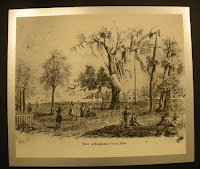 |
| Captian James McKay TBHC Collection |
The only profitable (legal) ventures [in the Tampa Bay area] were cattle and timber. As early as the 1850s, cattle traders established a route from Florida to Cuba Cuba from Gadsden Point, at the lower end of the Interbay Peninsula Hillsborough County
The railroad arrived in 1884, and the following year construction began on Tampa 's first two cigar factories, Sanchez y Haya and V. M. Ybor and Co., in a new suburb -- Ybor City Tampa Interbay Peninsula , and soon Port Tampa was shipping goods and people throughout ports along the Gulf of Mexico .
 |
| Ignacio Haya TBHC Collection |
 |
| Loading phosphate at Port Tampa TBHC Collection |
The same year that Ybor and Haya opened their factories, 1886, pebble phosphate was discovered in the Peace River in Polk County , Florida Hillsborough River and in the largely undeveloped southern portion of Hillsborough County Tampa






